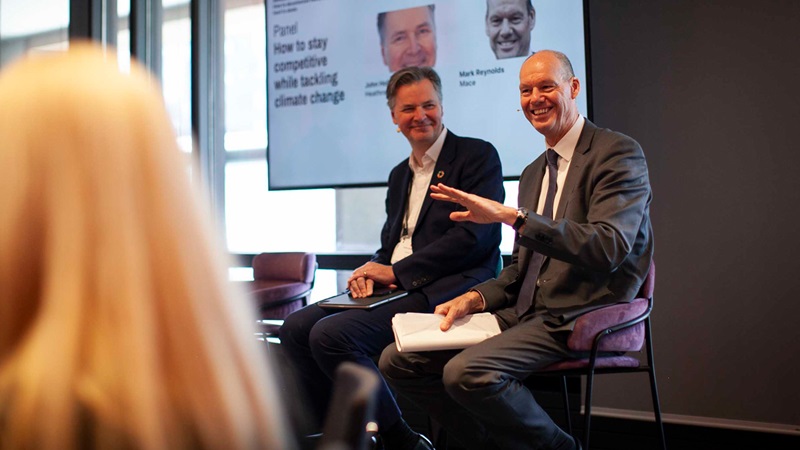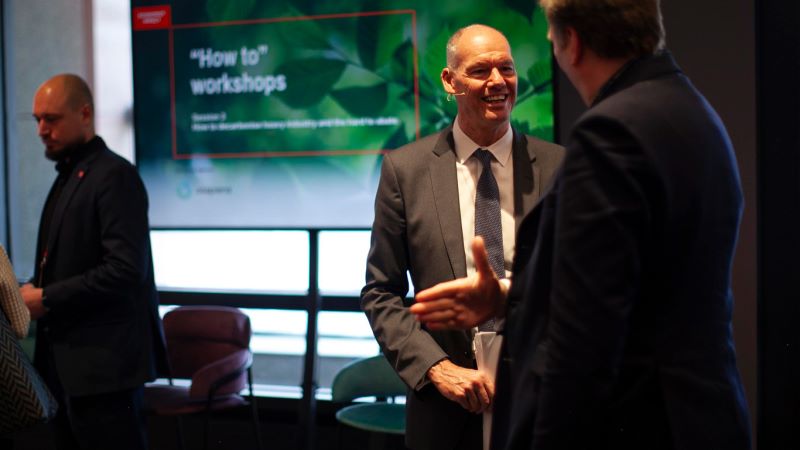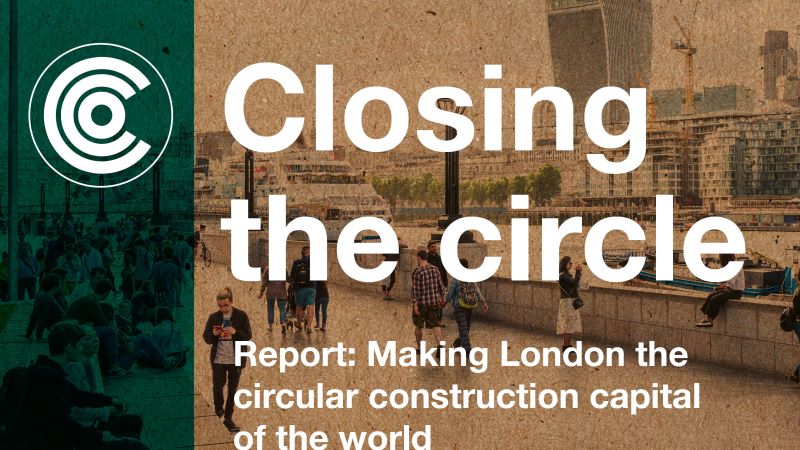Net Zero Carbon not Net Zero revenue: How to stay competitive while tackling climate change
Construction, like many heavy industries, has long been considered hard to abate in terms of carbon. This is due in part to the complexity of the supply chain and scale of solutions required. The assumption has been that such industries would struggle immensely to reach Net Zero by 2050, without negative financial impact. However, our experience over the last decade has shown key avenues to build more sustainably and propel the built environment to that 2050 goal. Our Group Chairman and Chief Executive Mark Reynolds looks ahead at how leaders must now evaluate their business models to ensure that achieving Net Zero ambitions co-exists with competitive business performance.
The ‘do less’ approach
Early in Mace’s carbon journey, our clients in heavy industry were faced with fundamental dilemmas such as “do we decarbonise, or do we shut down?”. This was and is the binary choice that businesses face. Innovations in sustainability have accelerated immensely in recent years, with lower carbon materials, sophisticated data analytics and even radical technologies such as carbon capture. Going back, we approached carbon reduction from the simple, yet highly effective, premise of building more with less.
This was a core commitment to our work at Heathrow Airport, where we worked with the client to utilise less cement, pouring substantially less concrete onsite. Another example of this was the 2012 Olympics, which had sustainability baked into its very heart, with ambitious targets to be the most sustainable games ever. Our commitment to only building what was necessary was exemplified by only one new permanent structure being created, in favour of existing stadia and competition spaces. Step changes like this showed early on that more efficient construction often meant more sustainable construction.
Construction 2 Production & Circular Solutions
More recently, the conversation around site activity has shifted towards offsite manufacturing, delivering components in a controlled environment in place of in situ manufacturing. This approach can deliver benefits in terms of productivity, precision and – through more closely managed energy usage, transportation, and installation – sustainability as well. At Mace, we developed our Construction 2 Production approach which highlights opportunities for lower-carbon offsite solutions.
A prime example is our Low-carbon cassettes (LCC) which are precast and designed for reusability. The concept of designing and building for reuse is a huge focus for construction, with the need to establish a circular economy one of the key ways we can reduce embodied carbon. You can learn more about the potential of circularity in our Closing the Circle report.
Collective commitments to decarbonise
While a mantra of ‘do less’ allowed for some early triumphs in reducing carbon on projects, to impact the industry, we needed clear actionable commitments to decarbonise our activity. The Construction Leadership Council developed CO₂nstructZero in response to the UK Government’s Net Zero 2050 plan, establishing nine priorities to measure decarbonisation against.
Roadmaps have also been created to address specific aspects of emissions reduction, such as the route to zero diesel construction sites and EP100 which looks to address onsite energy consumption. A prominent example of how successfully this has been applied is JCB’s reduction of CO₂ by 50% between 2010 – 2020 for its site vehicles.
Mace was also a founding member of the global SteelZero and ConcreteZero initiatives, to tackle embodied carbon in key building materials. Creating and enshrining such standards allows for cross-industry alignment, allowing businesses to know that they are not disadvantaged by pursuing more sustainable outcomes.
Incentivise innovation
Beyond the industry’s own coalitions, the final step to ensure hard to abate sectors bring down carbon is to mandate this in legislation. Striking the balance between incentive and punitive is the priority for governments, it is counter-intuitive to punish the supply chain or investors if they are not instantly compliant. I believe in the concept of regulation within a timeframe, this allows the marketplace to mature around net zero targets, without discouraging the firms bringing innovative solutions.
We are at an exciting moment, where sustainability has the potential to go beyond its already essential place in the built environment’s future, to one of the greatest avenues for growth.












